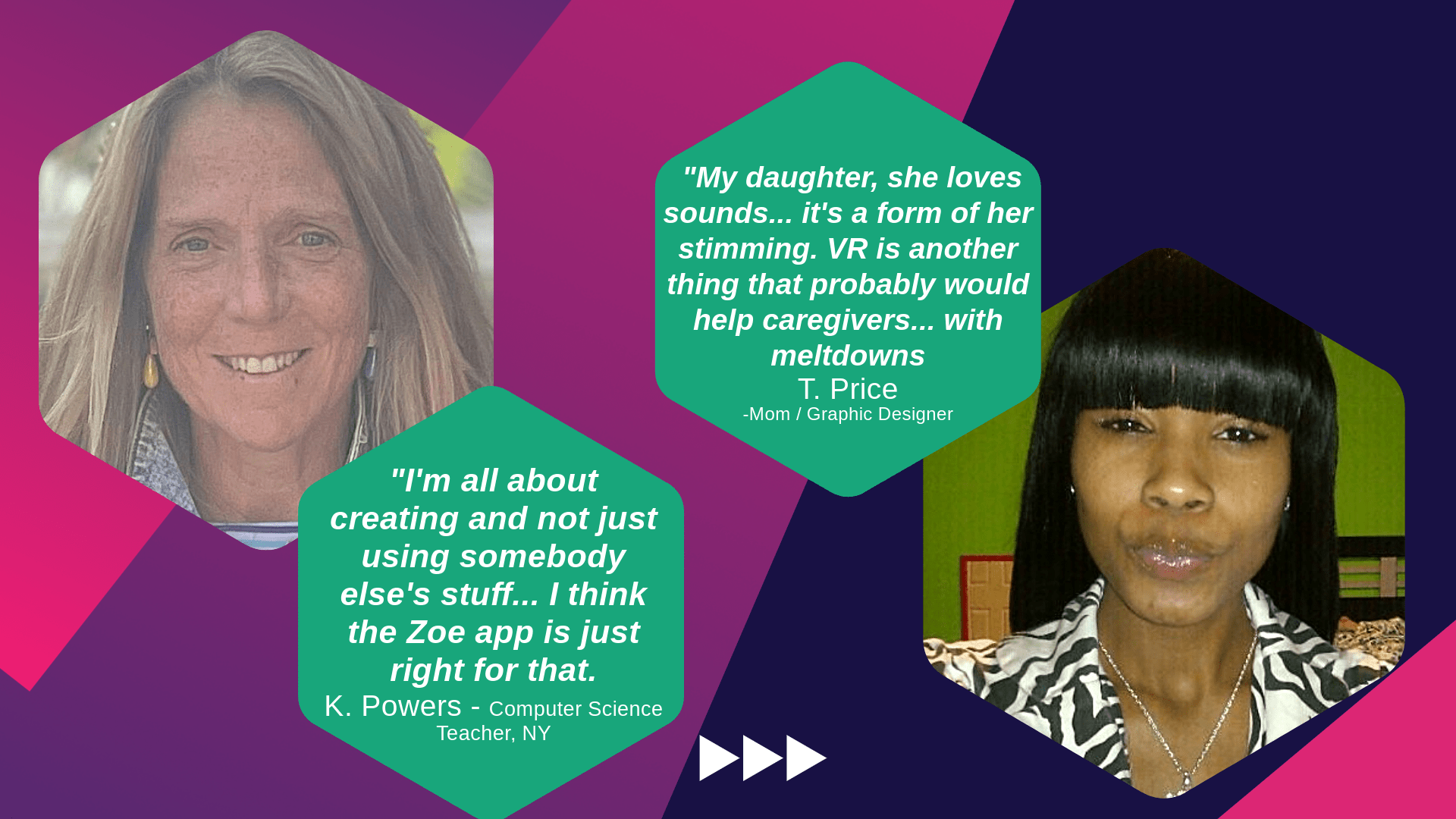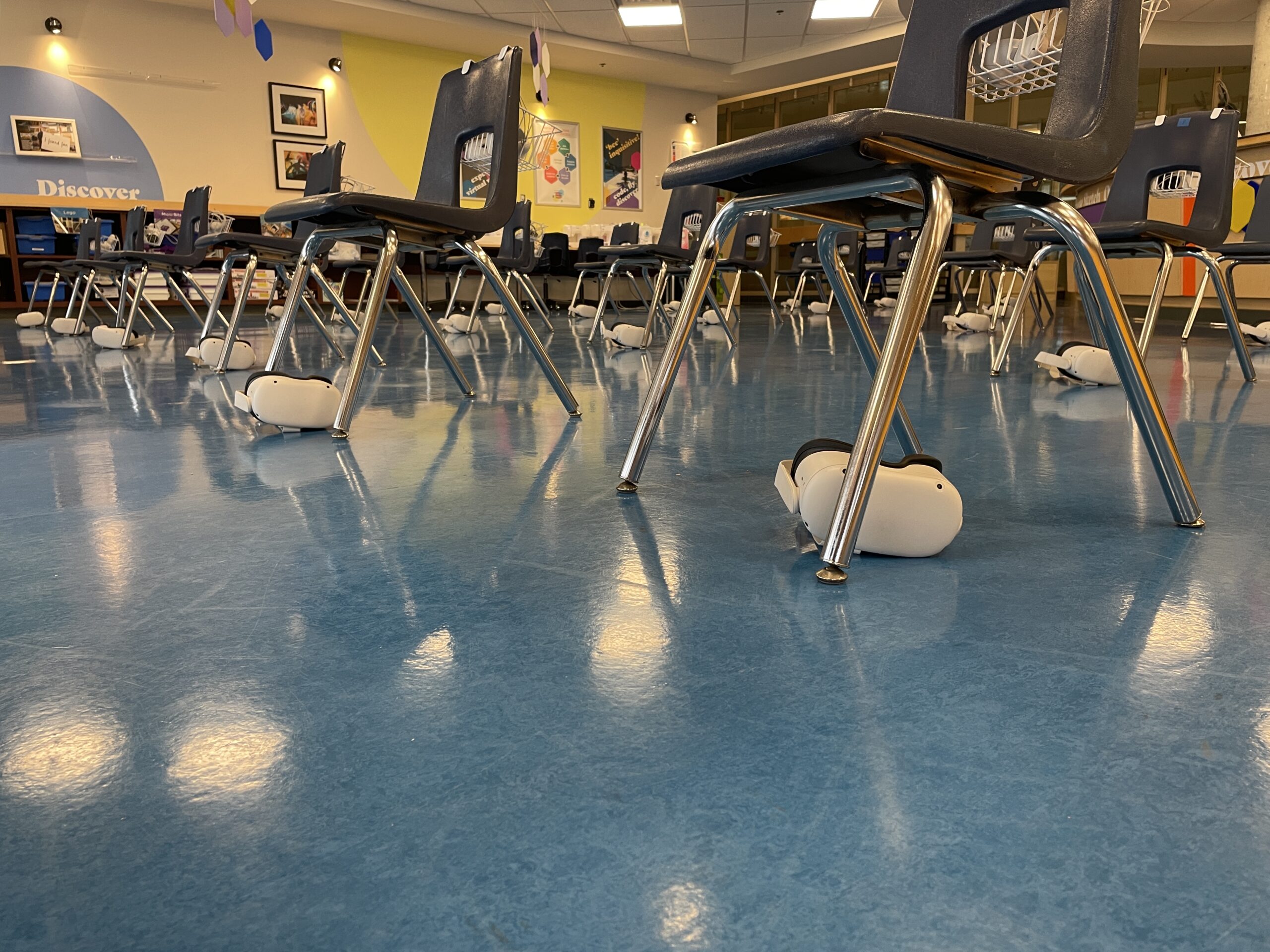
Background
Kelly Powers, a middle school computer science teacher in Tarrytown, NY, brings over two decades of experience to her classroom. Recently, she introduced VR technology into her curriculum to deepen student engagement and understanding through practical application.
Tonina Price, a graphic designer and mother to a nonverbal daughter on the autism spectrum explored VR to create therapeutic and educational experiences.

The Challenge
Kelly saw an opportunity to extend the district's hands-on science unit of rock hammering, where students collect and study rocks from their campus. Students unfamiliar with rock hammering found the introduction to the unit challenging to conceptualize. So, she tasked students with creating a VR simulation as a preparatory tool to ease the learning curve for future students.
Tonina faced the challenge of creating engaging and memorable water safety lessons for children, including her autistic daughter. Traditional methods lacked the interactive and immersive elements that could capture and retain the attention of children with various learning needs.
The Program
Kelly implemented Zoe Immersive’s VR program where students could virtually engage in rock hammering. This included gathering tools, safely breaking rocks, and classifying minerals. The VR scenes were designed to provide a realistic and sequential understanding of the process, making the physical activity more accessible to first-timers. This VR experience allowed students to engage virtually with the steps of rock hammering, which built their confidence and understanding.
Tonina Price, motivated by her daughter's sensory preferences and educational needs, designed a VR game called "Grace Island" Understanding that children on the autism spectrum seek and avoid sensory experiences, Tonina wanted to channel this inclination constructively. Her VR game focuses on water safety and environmental responsibility. The game incorporated rich, layered soundscapes that mimic the calming and engaging sounds of a beach environment.
This auditory element of the game was particularly tailored for her daughter, who finds certain sounds soothing and engaging. By embedding these sounds within the VR experience, Tonina provided a sensory-friendly learning environment that met her daughter's needs and enhanced her ability to absorb and retain information on important topics like water safety.
The Results
Kelly's students quickly adapted to the VR environment and were instantly engaged and enthusiastic. One student, in particular, created realistic scenes with rocks tumbling down. This level of detail and authenticity surprised both the student and Kelly. And even more telling, the project demonstrated how VR bridges the gap between theoretical knowledge and practical application. Students demonstrated a much deeper understanding and appreciation of the subject matter.
Tonina's daughter was captivated by her VR game, which offered an unmatched experience to traditional methods. The immersive nature of VR allowed her daughter to experience water safety lessons in a controlled, engaging, and interactive manner. Tonina expressed a heartfelt anticipation for her daughter's response to her next iteration of the game, "My daughter is nonverbal. So she says a few words. If she says anything when she puts it on, that's going to make my day." There is a dual value of VR in education for Tonina—both as a teaching tool and a means for her daughter to express herself and engage more actively with the world around her.

What They Learned
Kelly learned the importance of VR headset management to maximize classroom time and effectiveness. She recommends a structured setup and maintenance procedures for smoother operation and focus on learning. Kelly also saw the unique learning opportunities provided by VR, noting, '[Zoe] is a good entry point for creating and not just using someone else's stuff.' She further emphasized the ease of access for students, adding, 'The on-ramp is so accessible to kids, and that was really obvious.' Zoe's role makes VR approachable for beginners, and it makes everyone, novice users and experts, active participants in a world where they can shape, expand, and create to push their learning further.
Tonina's experience with VR shows how tailor-made learning experiences can cater to sensory and cognitive needs. She learned that VR is a significant enabler for nonverbal communication because it provides her daughter with a voice and a way to interact with the previously inaccessible world. VR can support learning and interactions for children who face unique challenges.
Kelly and Tonina's experiences serve as a powerful reminder of what can happen with technology and creativity in education. VR technology creates "Aha!" moments, it's true. But it also creates on-ramps to accessibility for students.
Interested in using VR in your classroom? Zoe Immersive provides initial and ongoing comprehensive VR support to administrators and teachers so students can start creating and learning with VR right away. Contact Zoe Immersive today to discover how VR can transform your educational experiences.


